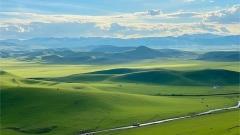Tibet Without Being Tibet
When I first heard about Gannan, I admit I was skeptical. “Tibet without being Tibet”? It sounded like a gimmick, some tourist slogan. But after spending several days in Gansu Province, winding through its high valleys, visiting monasteries, and watching herds of yaks under an enormous sky — I realized there was nothing gimmicky about it. Gannan is a quiet frontier, spiritual and raw, a place that feels like the edge of Tibet, yet isn’t quite what most people imagine when they picture the “Roof of the World.”
Why Gannan Matters
Getting to Gannan isn’t easy — at least not yet. The high-speed rail hasn’t reached here, so you travel by road, through mountain passes, grasslands, and river valleys. That’s part of its magic: arriving here feels like an expedition. Historically, the region has been Tibetan for centuries, and that legacy remains strong in local life. Monasteries dominate the horizon, prayer flags flutter in the wind, and the daily rhythm seems grounded in centuries of tradition.
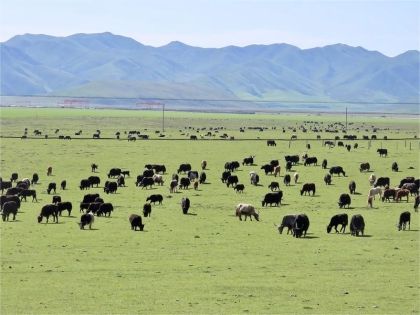
High Plateaus
Because the region is still relatively remote, foreign tourists are rare. In the three days I traveled across Gannan — from Xiahe to Langmusi to Diebu — I saw maybe two other Western travelers. That solitude, that gentle isolation, made the experience feel more personal, more authentic.
Yaks, Grasslands, and High Plateaus
One of the most unforgettable moments was seeing those vast pastures filled with yaks. Driving between towns, we turned a corner and suddenly there they were — shaggy black yaks grazing across open green plains, horns curved, moving slowly as though they had nowhere else to hurry. The air was thin and crisp at that altitude, and the vastness of the land made everything feel both humbling and timeless.

Labrang Monastery
I tasted yak in more ways than one: butter, yogurt, meat — each dish carried the flavor of the plateau. Here, yaks are more than just livestock; they’re central to daily life, providing milk, fuel, wool. Watching them made me feel deeply connected to this place, where people have adapted to altitude for generations.
Spiritual Heartbeat: Labrang Monastery in Xiahe
Our first real stop was Labrang Monastery, in Xiahe, perched at nearly 2,900 meters above sea level. This monastery, one of the largest Tibetan Buddhist centers outside of Tibet proper, carries a weight in both size and spirit. Walking in, I immediately noticed the prayer wheels — more than 2,000 arranged in a corridor that stretches for kilometers. Locals and pilgrims alike spin them with a steady, meditative rhythm, and each turn feels like a whispered wish.
Inside the courtyards, the air is heavy with devotion. Butter lamps flicker, incense curls lazily toward painted ceilings. Our monk guide, who spoke English, walked us through chapels covered with thangkas — large silk paintings of Buddhas, wrathful deities, and cosmic mandalas. Each painting holds meaning, each figure a story in the language of faith.
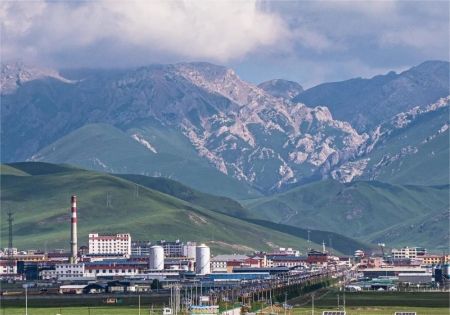
monastery stairs
But perhaps what struck me most was the yak‐butter sculptures. Made from salt-mixed yak butter, dyed in bright colors, sculpted into deities and mythical scenes — they are beautiful, delicate, and ephemeral. They last only a season, then are ritually remade, symbolizing impermanence in the most profound way.
Breathing High: Life at Altitude
At first, the altitude hit me harder than I expected. Climbing monastery stairs left me breathless, even though I consider myself reasonably fit. One night, I skipped a planned bonfire on the Sangke Grasslands — probably the most “local” experience I passed up — simply because I realized I needed rest more than I needed more adventure.

Langmusi
If you come here, pace yourself. Drink water. Slow your days. For me, acclimatizing was less about “getting over” the altitude and more about learning to move with it. It’s a humbling, beautiful process.
Langmusi: Where Two Worlds Meet
From Xiahe we traveled to Langmusi, a town that straddles the border between Gansu and Sichuan. What makes it special? Two monasteries — one in Gansu, one in Sichuan — overlooking the town from a hillside, their golden rooftops glinting in the sun.
Walking up to Sertri Monastery on the Gansu side, there’s a quiet buzz: locals spinning prayer wheels, pilgrims murmuring prayers, and the wind carrying distant chants. Our guide — a Tibetan Buddhist monk — helped interpret a massive wheel of life painting inside: the interconnected realms of existence, the cycle of suffering, and the path to liberation.
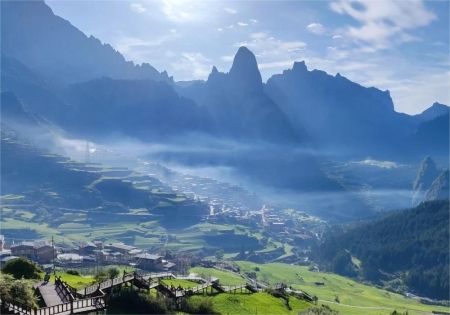
Zhagana
Standing up there, looking down at the town and up at granite peaks, I felt both awed and grounded. This was a spiritual crossroads, a place where culture, nature, and faith collide.
The “Stone Box” Village: Zhagana
Then came the moment I’d been waiting for: Zhagana, a village aptly named the “stone box.” It sits in a steep valley, surrounded by cliffs that rise like ancient walls. Wooden walkways hug the cliffs; there’s a sense of being tucked away, of being watched over by the mountains.
We hiked a loop trail that veered away from the tourist bus route, a decision I’m so glad we made. Fewer people, more silence, and views that felt like living paintings: villages, rivers, peaks — all framed by sky. The isolation here isn’t just physical — it’s mental. You can feel the world slowing down.
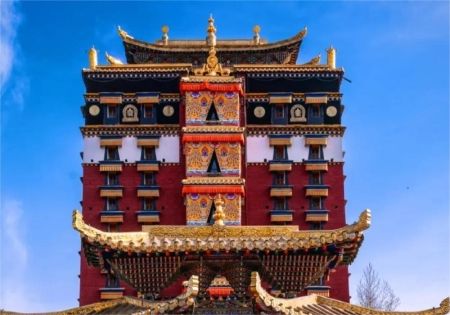
Milarepa Palace
We stayed in Diebu, at a modest but comfortable hotel, using it as a base to explore the region. Evenings were quiet; mornings felt sacred.
Hezuo and the Milarepa Palace
Our journey ended in Hezuo, the capital of Gannan. It’s not a flashy city — more a town with character. The Milarepa Palace, a nine-story temple, was a highlight. The story of its construction (and demolition) speaks of repentance, karma, and faith. To see it perched above the town — a tower of devotion — was powerful.
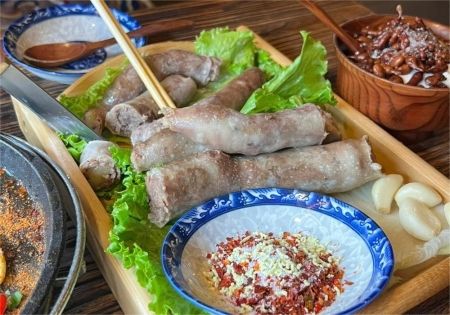
Gannan Beef Intestine
At night, the local night market came alive in Hezuo. Food stalls, smoke, sizzling skewers, laughter, and chatter. Families snacked, couples lingered, and I found myself just watching, tasting, and breathing in the energy. There’s something grounding about street food under open skies, especially here.
Food, Rest, and Local Rhythms
Food in Gannan was a revelation — yak in many forms, hearty, fresh, unfamiliar in delicious ways. We often ate in simple hotel dining rooms, sharing dishes on round tables, passing plates, tasting everything.
Lodging was not luxurious, but it was real. Rooms were practical, not polished for Western tourists. Squat toilets, firm beds, local breakfast fare. But sleeping at altitude had its own reward: opening the window at dawn to see prayer flags dancing against a pale sky, or hearing distant chants floating in the morning air.
Things to Know Before You Go
-
Best Time to Visit: Summer is ideal — the grasslands are green, the wildflowers bloom, and yaks graze freely. Winters are brutal, and many places may be inaccessible.
-
Getting There: For now, you need to travel by road — there’s no high-speed rail yet.
-
Altitude: Much of Gannan sits between 10,000–11,000 ft. Be prepared for thin air; drink water, rest, and go slow.
-
Connectivity: Mobile internet might be spotty, and English is uncommon. Use a translation app. And note: internet in China is limited — consider VPNs if you want to access certain sites.
-
Money Matters: ATMs are not everywhere, so carry cash.
-
Tours: There are small-group tours available, or you can go more independently — just be ready for a slower, more contemplative pace.
Final Thoughts: Was It Worth It?
Absolutely. Gannan was one of the most soul-stirring legs of my China trip. Three words sum it up for me: isolated, elevated, Buddhist. There’s a rawness here that feels increasingly rare in the age of mass tourism. This is a place where yaks still wander free, where monks chant under centuries-old rooftops, and where every turn in the road feels like a step deeper into a living tapestry of faith and nature.
Standing above Zhagana, watching the cliffs frame the valley, I thought back to my childhood dream of drawing a map of Tibet — a dream that felt so impossible back then. Here I was, decades later, on the edge of that plateau, in a land that doesn’t shout its spirituality but whispers it, in every prayer wheel spin, in every yak grazing, in every fluttering flag.
If you’ve ever longed to experience Tibet — but want to skip the crowds, the bureaucracy, or the extreme altitude — Gannan may be your perfect compromise. It’s not “Tibet Lite”; it’s its own world, and one I’m deeply grateful I made time to explore.






